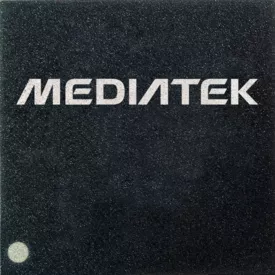Apple A16 Bionic vs MediaTek Dimensity 8300
SOURCE ARTICLES
Apple A16 Bionic: specs and benchmarks
nanoreview.net
The Apple A16 Bionic is a 6-core chipset manufactured using a 4-nanometer process technology. It has 2 cores Everest at 3460 MHz and 4 cores Sawtooth at 2020 MHz. In benchmarks, it scored 1438650 in AnTuTu 10 and 9874 in GeekBench 6. The GPU frequency is 1398 MHz with 128 shading units. It supports 5G, has a max camera resolution of 48MP, and can capture and playback 4K videos at 60FPS. It also supports Wi-Fi 6 and Bluetooth 5.3.
Latest Apple A16 Bionic GPU benchmarks confirm a disappointing generational performance jump
www.notebookcheck.net
The latest benchmarks for Apple's A16 Bionic GPU show disappointing performance compared to its predecessor and rivals. While it outperforms other tested SoCs in raw performance, it is less efficient than the Dimensity 9000 and Dimensity 8100. Compared to the Snapdragon 8+ Gen 1, the A16 Bionic is about 20% more powerful and 10% more efficient. It slightly outperforms the A15 Bionic in GPU tests but offers only a slight improvement in raw performance. iPhone 13 owners seeking better gaming performance may want to wait for the iPhone 15 series.
The Apple A16 Bionic shows how far phones have come in closing the processor gap
www.techradar.com
The Apple A16 Bionic processor has impressive specs, with 16 billion transistors and a 4nm node. It features a 5-core GPU and a 16-core neural engine, making it powerful for a mobile phone processor. However, it still lags behind desktop and laptop processors due to physical constraints. The A16 Bionic's performance gains are limited by its smaller size compared to desktop chips. In contrast, Apple's MacBook and iMac lineups are expected to have faster performance gains. The A16 Bionic could run older computers, but it would struggle to power a modern MacBook Pro. The A16 Bionic has a 6.7% increase in transistor density compared to the A15 Bionic, while the Apple M2 has a 25% increase over the M1. The gap between iPhone chips and MacBook chips is likely to widen in the future.
Apple’s A16 chip doesn’t live up to its ‘Pro’ price or expectations
The A16 chip in Apple's iPhone 14 Pro models is a minor evolution of the A15 chip, with only slight improvements in performance. It features a new display engine and LPDDR5 memory, but the overall architecture remains largely unchanged. The CPU performance shows gains of around 8-10%, while GPU performance benefits from the increased memory bandwidth. However, the A16 chip does not live up to its "Pro" price or expectations, and some argue that it should have been named A15+ or A15 Pro instead.
iPhone 14 Pro benchmarks — here’s how powerful A16 Bionic is
The iPhone 14 Pro and iPhone 14 Pro Max are powered by the new A16 Bionic chipset, which outperforms the competition in CPU and GPU benchmarks. The A16 Bionic is significantly ahead of Qualcomm's Snapdragon 8 Gen 1 and Google's Tensor chip. In terms of CPU power, the iPhone 14 Pro is the clear winner, even surpassing the A15 Bionic-powered iPhone 14. In graphics benchmarks, the A16 Bionic's 5-core GPU delivers impressive performance, outperforming the Snapdragon 8 Plus Gen 1 and the Galaxy S22 Ultra. In a video transcoding test, the iPhone 14 Pro performs exceptionally well, completing the task in just 26 seconds. Overall, the iPhone 14 Pro and iPhone 14 Pro Max are the fastest and most powerful phones available.
Apple A16 Bionic Processor - Benchmarks and Specs
The Apple A16 Bionic is a powerful processor found in the iPhone 14 Pro models. It offers 6 cores, with improvements made to the efficiency cores and memory bandwidth. The Neural Engine offers increased AI performance, while the integrated graphics engine benefits from higher memory bandwidth. The CPU performance shows small improvements compared to the previous generation, but still outperforms competitors. The chip is manufactured in a 4nm process and integrates nearly 16 billion transistors.
Apple A16 Bionic: All you need to know about the mobile chip
The Apple A16 Bionic chip is the latest mobile chip from Apple, featured in the iPhone 14 Pro and Pro Max. It is built on a 4nm architecture with 16 billion transistors, making it faster than the A15 chip. It boasts a 6-core CPU, a new neural engine, and an Advanced ISP for improved camera performance. Apple claims it is the most powerful smartphone chip, 40% faster than the competition. It will also be featured in the upcoming iPhone 15 and 15 Plus.
Snapdragon 8 Plus Gen 1 vs Dimensity 8300: tests and benchmarks
The review compares the Qualcomm Snapdragon 8 Plus Gen 1 and MediaTek Dimensity 8300 processors. The Snapdragon 8 Plus Gen 1 has a larger L3 cache size and the Dimensity 8300 has a higher GPU frequency and memory bandwidth. In benchmarks, the Dimensity 8300 performs better in AnTuTu and has higher CPU clock speed. The Snapdragon 8 Plus Gen 1 performs better in Geekbench. In gaming, the Dimensity 8300 has higher FPS in most mobile games. The Snapdragon 8 Plus Gen 1 has a higher NanoReview score. The technical specifications of both processors are listed, including architecture, cores, frequency, cache, GPU, memory, camera, and connectivity.
MediaTek Dimensity 8300 Ultra Energy Efficiency Curve Shows Impressive Lead Over Multiple CPUs
The MediaTek Dimensity 8300 Ultra chipset shows impressive energy efficiency and outperforms other mid-range and high-end chipsets in terms of CPU and GPU performance. It also brings AI capabilities and is expected to be available in international markets soon. This proves that mid-range phones are becoming more capable and narrowing the performance gap with flagship devices.
Snapdragon 8 Gen 2 vs Dimensity 8300: tests and benchmarks
The review compares the Qualcomm Snapdragon 8 Gen 2 and MediaTek Dimensity 8300 processors. The Snapdragon 8 Gen 2 has a larger L3 cache size, while the Dimensity 8300 has a higher GPU frequency, supports higher memory bandwidth, and has a higher CPU clock speed. In terms of benchmarks, the Snapdragon 8 Gen 2 performs better in AnTuTu and Geekbench tests. It also has better gaming performance in popular mobile games. The technical specifications of both chips are listed, including architecture, cores, frequency, cache, GPU, memory, camera, and connectivity. The review concludes by asking for the reader's opinion on which chip they would choose.
MediaTek Dimensity 8300-Ultra Processor - Benchmarks and Specs
The MediaTek Dimensity 8300-Ultra is a 4 nm ARM-based SoC designed for Android smartphones. It offers improved CPU and GPU performance compared to its predecessor, the Dimensity 8200-Ultra. It supports 5G SA, dual 5G, WiFi 6E, and Bluetooth 5.4. The processor has eight cores, including a power core operating at up to 3.35 GHz and energy-saving cores at 2.2 GHz. It supports LPDDR5 RAM and UFS 4.0 internal memory. The integrated ARM Mali-G615 MC6 GPU can handle displays up to 2,960 x 1,440 pixels with a refresh rate of up to 120 Hz. The processor also features an Imagiq 980 image processor for camera improvements.
What is the MediaTek Dimensity 8300?
The MediaTek Dimensity 8300 is a premium chipset for smartphones, offering improved performance and battery efficiency. It stands out with its on-device Generative AI capabilities, supporting tasks like photo expansion and text generation without the need for an internet connection. The chipset also delivers a 20% boost to CPU performance and a 60% gain in GPU performance compared to its predecessor. It enhances video capabilities with better quality 4K HDR video recording and simultaneous capture from two lenses. Overall, the Dimensity 8300 is a significant upgrade for the premium smartphone market.
+ 9
AI COMPARISON
Comparison Table: Apple A16 Bionic VS MediaTek Dimensity 8300
| Feature | Apple A16 Bionic | MediaTek Dimensity 8300 |
|---|---|---|
| Total Clock Speed | 15 GHz | 21.15 GHz |
| RAM Speed | 6400 MHz | 8533 MHz |
| Semiconductor Size | 4 nm | 4 nm |
| GPU Clock Speed | 1398 MHz | Not specified |
| Max Memory Bandwidth | 51.2 GB/s | Not specified |
| DDR Version | 5 | 5 |
| L2 Cache | 24 MB | Not specified |
| CPU Threads | 6 threads | 8 threads |
| 64-bit Support | Yes | Yes |
| Integrated Graphics | Yes | Yes |
| 5G Support | Yes | Yes |
| DirectX Version | Not specified | 12 |
| Geekbench 6 Single | 2321 | Not specified |
| Geekbench 6 Multi | 5684 | Not specified |
| Geekbench 5 Single | 1874 | Not specified |
| Geekbench 5 Multi | 5382 | Not specified |
| HMP | Yes | Yes |
| Transistors | 16000 million | Not specified |
| Shading Units | 128 | Not specified |
| Big.LITTLE Architecture | Yes | Yes |
| Maximum Memory Size | 6 GB | Not specified |
| Memory Channels | 2 | 4 |
Summary
Performance & Efficiency:
- Apple A16 Bionic: Offers robust performance with a total clock speed of 15 GHz and 6400 MHz RAM speed. It is a 6-thread processor designed using 4nm technology, indicating high efficiency and performance. The A16 Bionic excels in single-core and multi-core benchmarks, indicating its superiority in handling complex tasks and applications efficiently. However, it does show a modest generational improvement over its predecessor, especially in GPU performance.
- MediaTek Dimensity 8300: This chipset stands out with a higher total clock speed of 21.15 GHz and superior RAM speed of 8533 MHz. It also features 8 CPU threads and supports the latest DirectX 12, suggesting enhanced graphics and gaming capabilities. The chipset is noted for its energy efficiency and high GPU performance, making it suitable for mid-range to premium smartphones.
Technological Advancements:
- Both chipsets are manufactured using the 4nm process, ensuring that they are at the forefront of current semiconductor technology. The Apple A16 Bionic and MediaTek Dimensity 8300 support integrated graphics and 5G, crucial for modern applications and connectivity.
Market Positioning:
- The Apple A16 Bionic is targeted at high-end, flagship devices, particularly the latest iPhone models. It boasts significant improvements in speed and efficiency but has been critiqued for not making substantial generational leaps in performance.
- The MediaTek Dimensity 8300 is aimed at a slightly different segment, offering high performance with a focus on energy efficiency and advanced AI capabilities, making it a competitive option for premium Android devices.
Recommendations
- For Power Users and Gamers: The MediaTek Dimensity 8300 with its higher clock speeds, superior RAM speed, and advanced GPU capabilities might be more appealing, especially for Android users seeking high performance and efficiency in gaming and multimedia tasks.
- For iOS Users and Brand Loyalists: The Apple A16 Bionic remains a solid choice, delivering reliable performance and integration within the Apple ecosystem, especially for those using applications that require high processing power and efficient multitasking.
- For General Users: Both chipsets offer advanced 5G support and integrated graphics, making them suitable for everyday use, streaming, and basic gaming. The choice would largely depend on user preference for device ecosystem (iOS vs. Android).
PRICES
ASK AI
BestVs.ai
Hello, I'm your AI shopping assistant. How can I help you?
AI can make mistakes. Consider checking important information.


